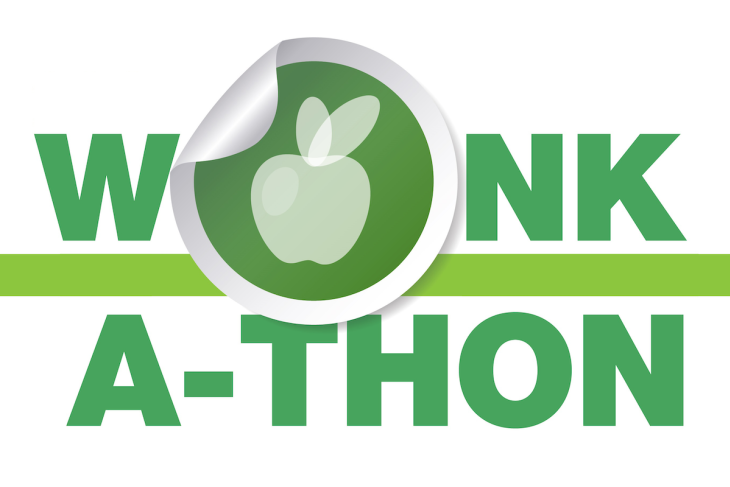Editor’s note: This was the first-place submission, out of nineteen, to Fordham’s 2019 Wonkathon, in which we asked participants to answer the question: “What’s the best way to help students who are several grade levels behind?”
“When it’s too easy, I feel like I’m getting all of the questions right, that I’m not even learning anything.”
So said a second grader in a recent interview conducted as part of an effort at NWEA, the K–12 assessment not-for-profit where I work, to envision how we might better support learning for all students.
This remark stuck with me because it states simply what we in the education space already know: If we want to accelerate learning for every student, we must engage every student in productive struggle. Call it jargon if you want, but even our young students know they need to be appropriately challenged if they are going to reach their highest potential.
We need to move beyond binary thinking about growth versus proficiency, or “meeting kids where they are” versus “teaching them grade-level content,” and focus on blended approaches that help educators identify and embrace the tension points that help propel each student toward rigorous learning targets. This is relevant for kids at all levels, but it’s especially critical for students who are several years behind. They must make big leaps in their learning if they are to leave the K–12 system ready to succeed.
To make this happen, every student should have the opportunity to learn based on where they are and be exposed to grade-level content. These can understandably feel like mutually exclusive goals. As former chair of the Smarter Balanced Executive Committee, I am proud of how far we have come in creating more rigorous academic standards for students. And while some states have moved away from consortia, they have not shifted away from high expectations. But we still need to put lots of energy into supporting educators with the very real challenge of helping students—many of whom are several years behind—meet the high bar that has been set.
It’s important to be realistic with this goal. To demand that educators make up for three years of learning in one year is out of touch and demoralizing. At the same time, if students are significantly behind, we cannot be satisfied with average growth. Simply saying, “Are they growing?” isn’t sufficient. The question should be, “Are they growing enough? Over time, will they acquire the skills and knowledge they need to be ready for what’s next?”
Focusing on how skills scaffold within and across grades to accelerate growth
To generate this kind of growth, we must ensure that we are focused on what students are ready to learn—even if a stretch—not on what they can already do. We also need to stop thinking about a “ladder” of content that we march kids through on a regimented calendar and, instead, identify the concepts and skills that are most critical in helping them access what’s next. The more we know about these “sparks” that accelerate growth, the more successful educators, parents, and students will be in facilitating the big learning gains required to achieve equity in outcomes.
How do we do this? It requires looking at state standards in a nuanced way so that both curricula and assessment results provide educators with ideas and examples of how to increase or decrease complexity with more on-grade access points for students across a range of achievement. In other words, just because a student isn’t yet proficient does not mean he can’t engage in beginning or developing level content within that grade. Or maybe there are just a couple of concepts from the grade below that, once learned, will unlock the student’s ability to master on-grade content.
Imagine how it might feel to be a fifth grader with a third-grade book put in front of you. Would you feel motivated to learn, or would you feel embarrassed to let your classmates see? Conversely, what will result in college and career readiness—moving a proficient student into content from the grade above, or helping her develop advanced levels of understanding before moving her into content from the next grade? Focusing on deeper learning and the way that concepts and skills scaffold on each other—both within and across grades—can help all students learn more comprehensively and efficiently.
Moving toward an asset-based mindset
This kind of approach will help us move away from talking about students and schools from a deficit mindset. We can talk about the growth we are seeing and the goals we are meeting instead of just asking, “Are we proficient or not?” It could also mean eventually moving from grade-based education to competency-based systems, or providing more flexibility and time within grade-based systems for teachers to attend to learning gaps (e.g., year-round school or more flexibility in time to complete K–12 education).
But we can’t change from traditional age/grade-based education systems to more individualized ones overnight. In the short term, we need to:
- Start with conversations about what we value and show that looking at growth in the context of proficiency can help us attend to equity.
- Unify state and district assessments so that they are working in concert toward the same goal: improved learning.
- Be intentional in how we use technology for learning and assessment. It will only be effective if it fosters agency in the learning process and strengthens the impact that a caring, professional educator has on students.
In the long term, we need to learn more about learning. We can do this by:
- Gathering empirical evidence about what those “sparks” are that can turn quickly to flame.
- Identifying the different learning paths that students might effectively take to get from point A to point B.
- Moving beyond a linear understanding of how learning scaffolds to a more diverse, network of possibilities.
This multidimensional approach will go a long way in accelerating learning for all students and closing opportunity and achievement gaps.
Increasing coherence across systems of teaching, learning, and assessment
So where does that leave us? We have the high standards. We have accountability plans that consider multiple measures for a more holistic view of school and student performance. Now it’s time to increase coherence across systems of teaching, learning, and assessment.
- Districts must be committed to adopting curricula aligned to the standards and achievement levels defined in the state.
- Assessment providers must ensure that tests are equally aligned and results support teachers in both personalizing instruction and teaching grade-level content.
- Teachers must be committed to finding the point of productive struggle for every child.
- State and district administrators must support them in this effort by valuing the growth that occurs along the pathway to proficiency and providing the tools and time needed to spur the levels of growth required for every student to succeed.
As another young student recently said to me, “I think they should do more of encouraging us to accomplish our goals and stuff. If we like science, helping us become a scientist and getting a good job in that.” It really is that simple. We don’t need to start over or rewrite the Every Student Succeeds Act or choose growth over proficiency (or the other way around) to help all kids unlock their superpowers. We can do it now, together, even though it isn’t easy.


